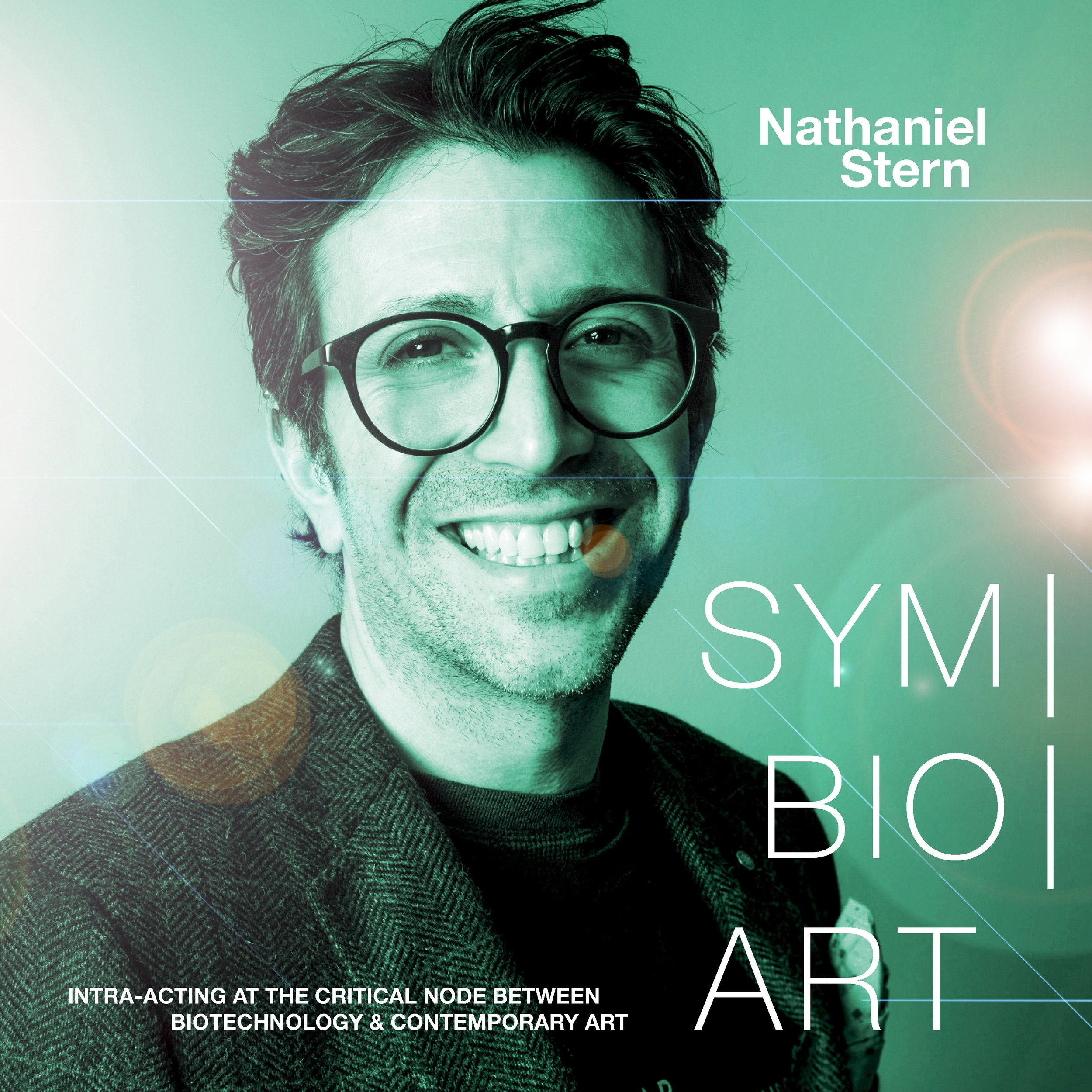Dr Nathaniel Stern
Dr Nathaniel Stern (b 1977, New York, USA) is a full Professor between Art, Mechanical Engineering, and Entrepreneurship at the University of Wisconsin-Milwaukee. He has permanent residency status in South Africa, having lived and taught in Johannesburg from 2001–2006. His work has been funded by the National Science Foundation, National Endowment for the Arts, RSA Lottery, and elsewhere, is in collections including the JAG, Stellenbosch, UP, Northwestern Mutual, Tezos Foundation, St Kate Arts, FlamingoDAO, and more. Stern’s art with technology, both its use and waste, has been covered by WIRED, Fast Company, CNET, Scientific American and more. He has been an Associate Researcher with the University of Johannesburg for more than a decade, and lives with his wife, five kids, and too many animals, in Milwaukee, Wisconsin.
Artist Statement
I make art that amplifies how we relate to things, ourselves, and each other. I present what these relationships do, and mean for us, and are.
Simple, awkward, funny, beautiful, generous, mean, and more. And not just human relationships. While I, myself, am fairly simple (ba-dum-cha), I’ve had an awkward backpack, a funny phone, a beautiful bow tie, a generous shower, a mean cup of coffee. And each impacts me, and those around me.
Art has the ability to highlight and magnify ecological space – to ask us how we might better perform our relationships – through humor, discomfort, movement, perception, wonder, or other means. I combine new and traditional media in installations and objects, prints, videos, sculptures, digital assets, and public works that suspend and intensify our ecological relationships: with the humans, nature, and politics therein. My work foregrounds taken for granted categories – such as technology or nature, body or space, language or culture – and works to remember each as a dynamic encounter. Here we engage with and feel the world around us. We experience and practice how concepts and matter cooperatively and continuously emerge.
This is both an ethical and aesthetic practice. It is an action, and a call to action.
On SYM | BIO | ART
The Wall After Us is a site-conditioned installation – taking between 250 and up to 1500 square feet of space – exhibiting laptops, keyboards, tapes, drives, phones, circuits, and other electronic waste, intermingled with cables and plants, all clinging to and climbing up the walls to create an overwhelming and affective sense of what we use and throw out, what it might grow into, and how the Earth may (or may not) claim it. Several towers of e-waste, between 8 and 12 feet tall, come out and into the viewer’s space, off of the wall, implicating them, their media, and their bodies, in the ecologies at play in and around humans, nature, and politics, waste, media, and utility.
The Wall After Us is part of The World After Us: Imaging techno-aesthetic futures, a series and traveling exhibition of media sculptures that materially speculate on what our devices – phones and tablets, batteries and displays, etc – might become, over thousands or millions of years. Here I attempt to mimic geological time, as pressure and heat, with earth and clay – through chemical interactions or specialized machinery – on laptops and tablets, then display where that potential lies, as petrified-like LCDs or mangled and melted electronics, on pedestals in a gallery, or in beakers and tubes (Phossils). I also turn “dead media” computers into efficient planters for edible goods, food for mold, or seeds of their own growth – and show them as photos, videos, and sculptural forms (Server Farms). utilities see e-waste used as a raw material, transformed into useful tools or ink, while Drivers stage all these works as mediagenic images. The exhibition also sees a 250-plus square foot, wall-based installation alongside three, greater than human-sized towers of piled-on electronics and plant life.
What will digital media be and do, after us?

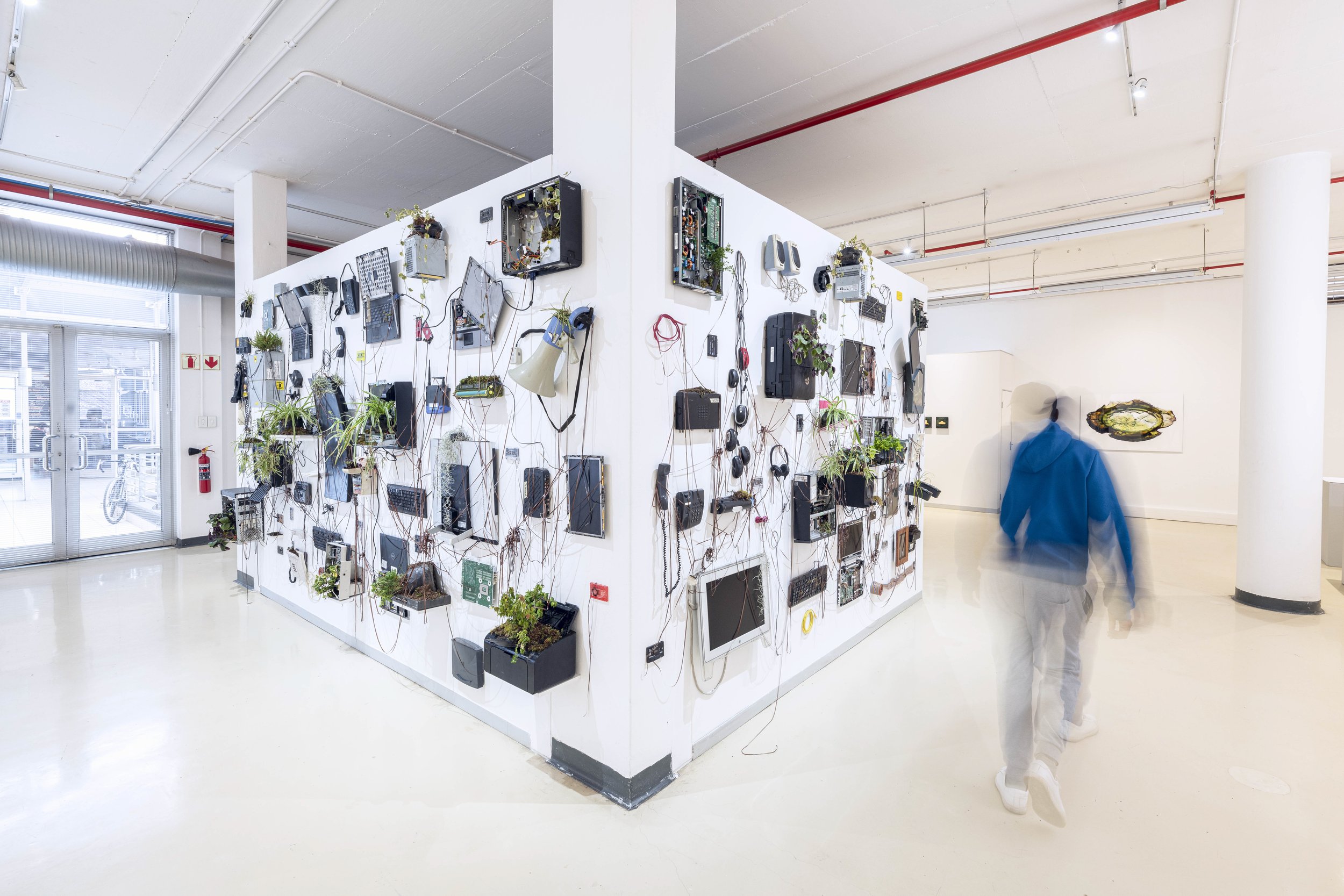
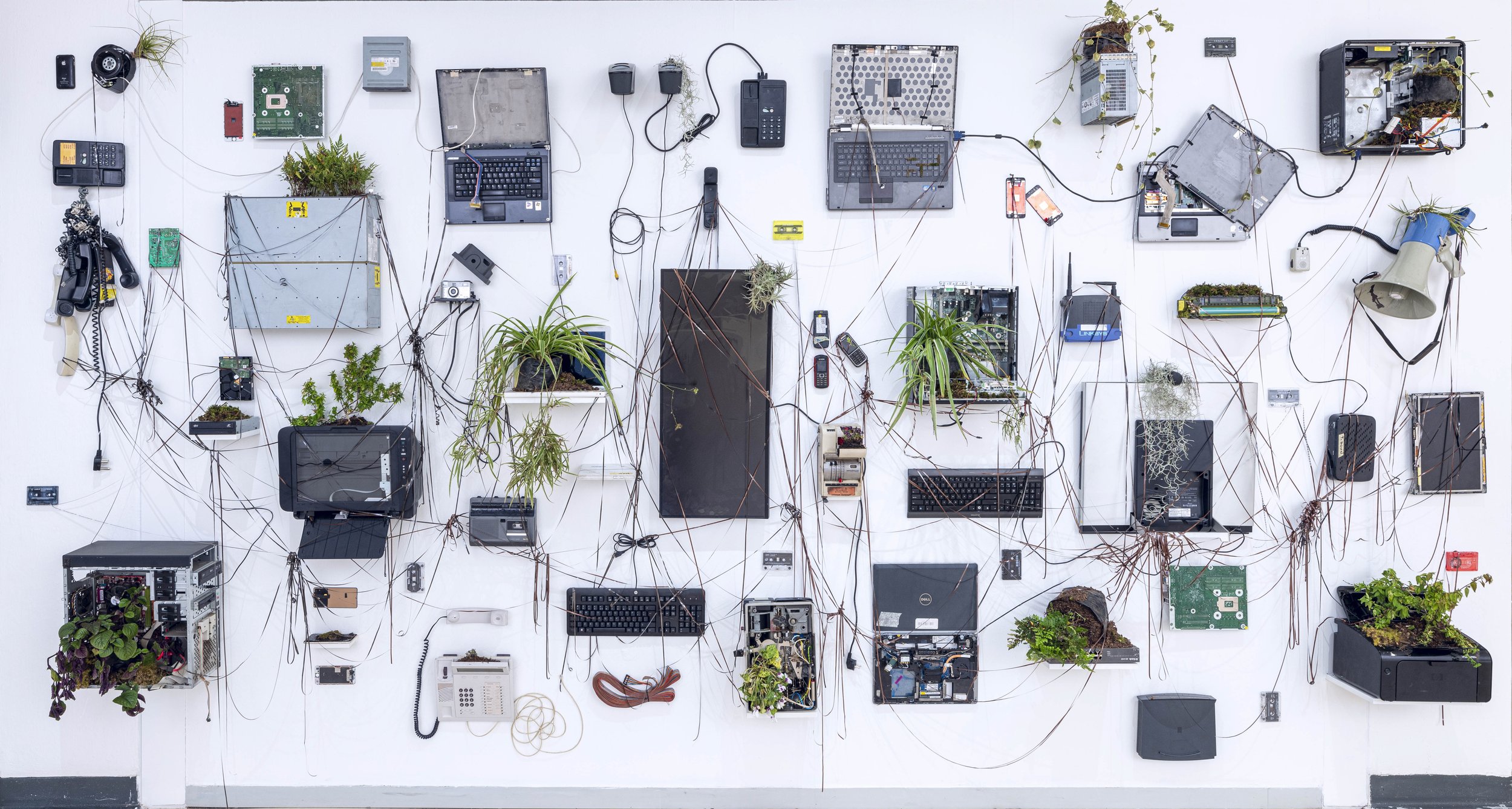
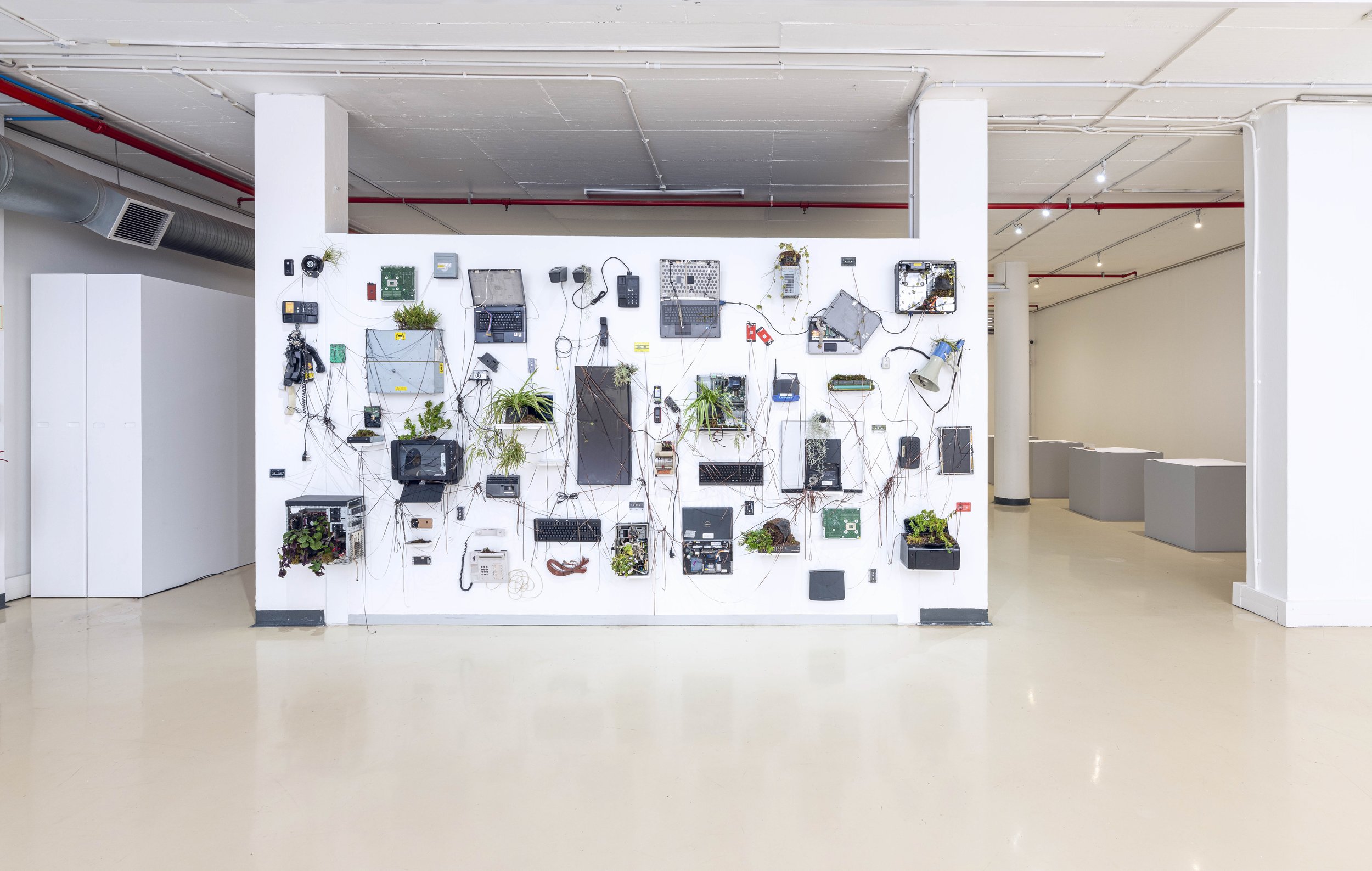
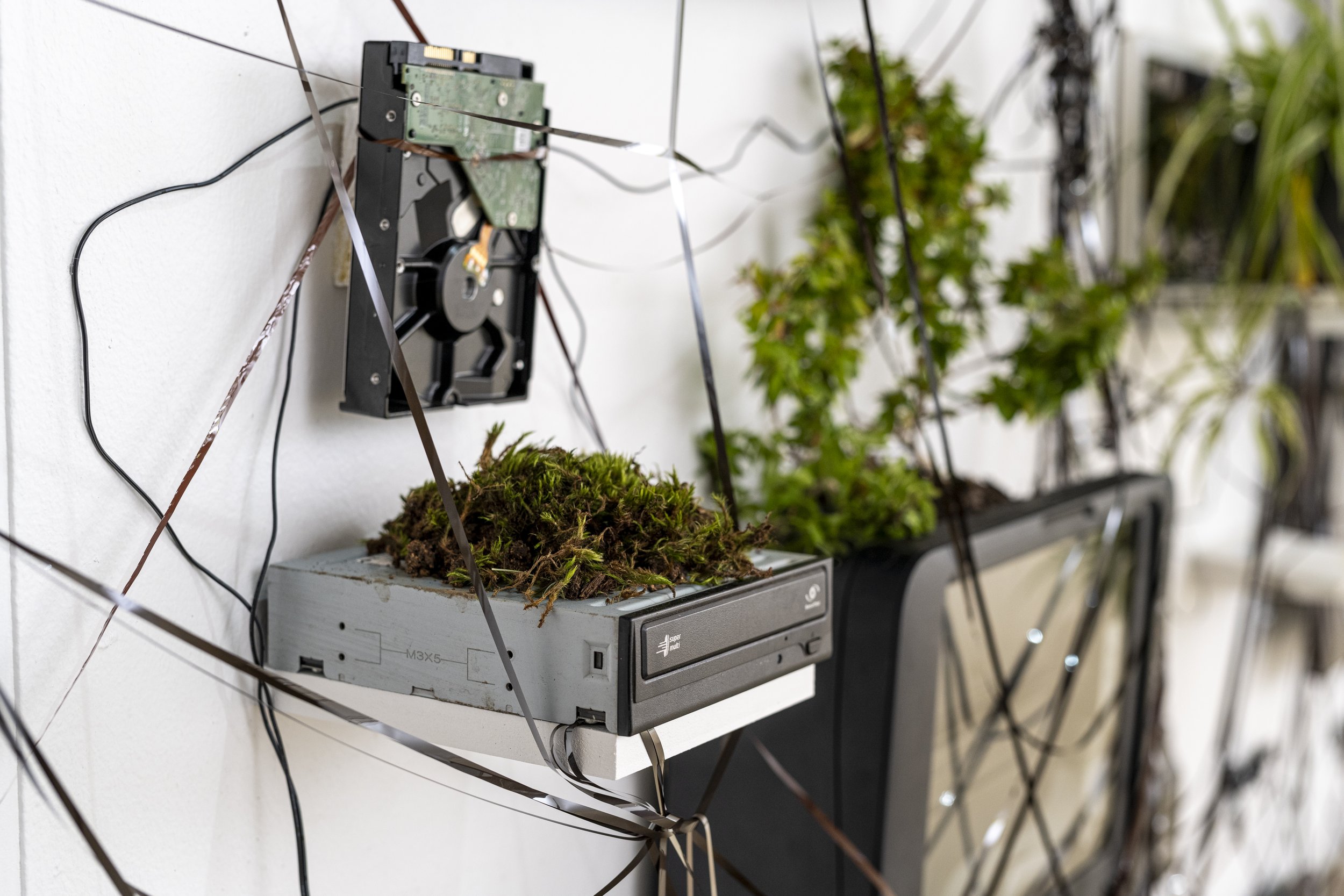
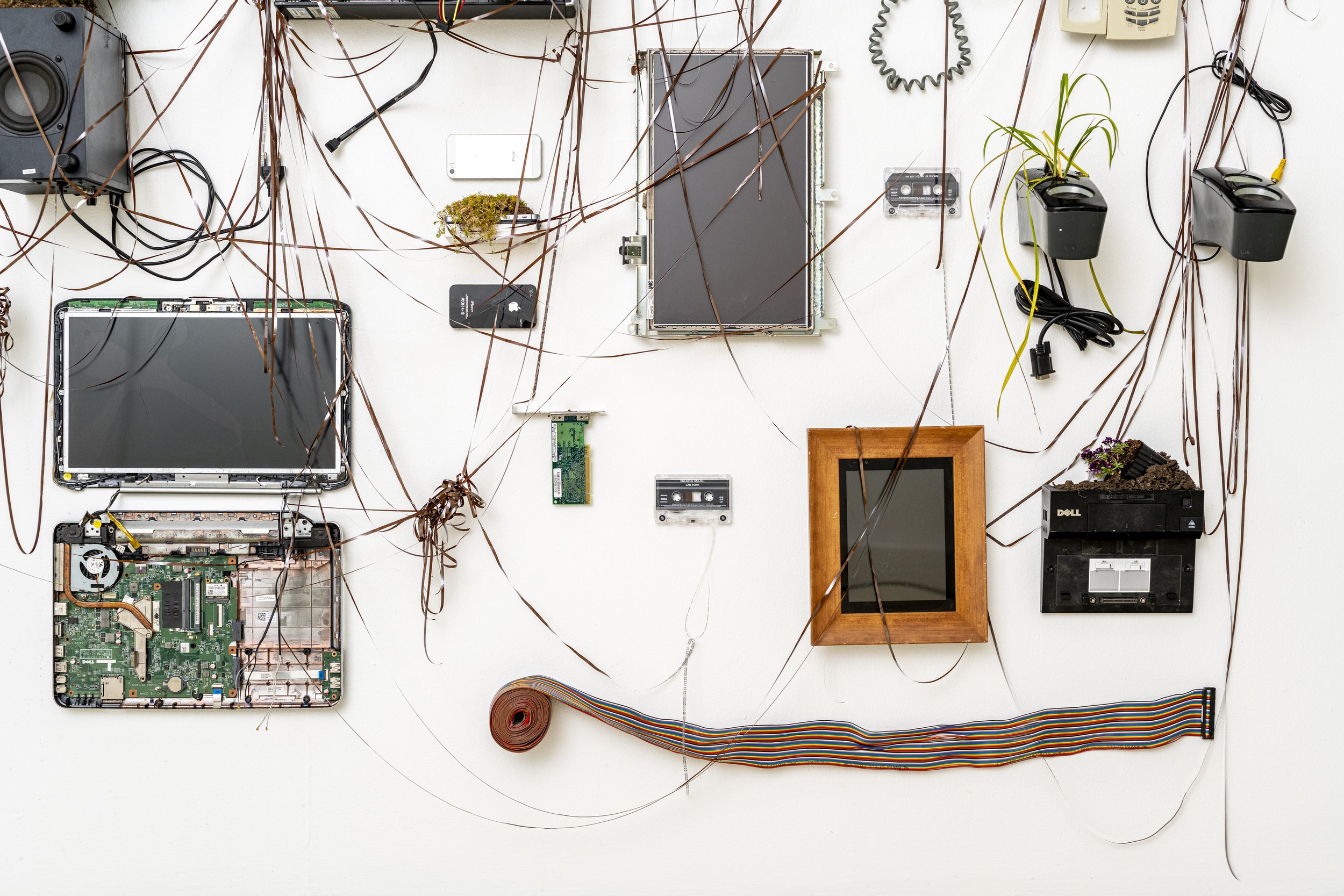
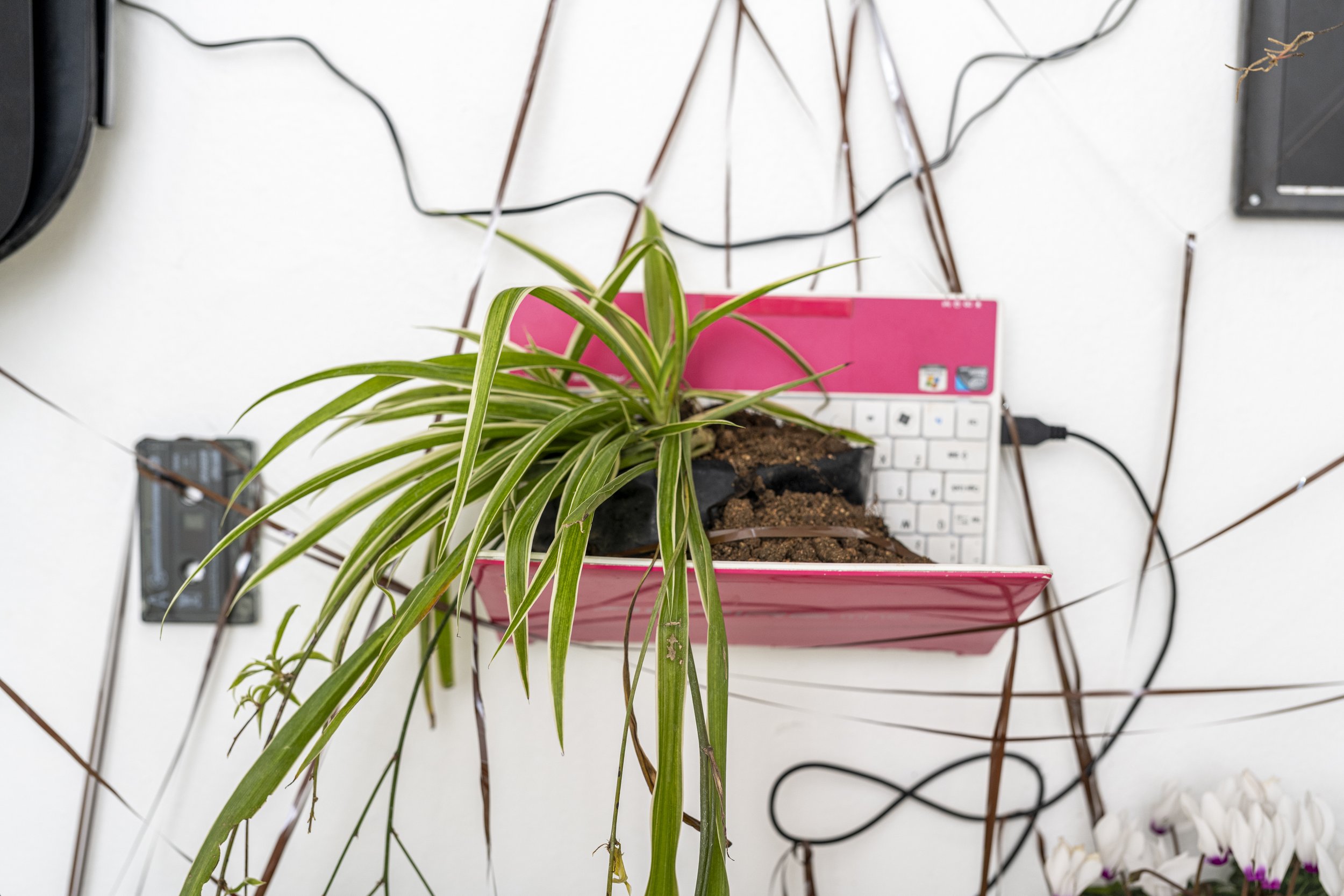
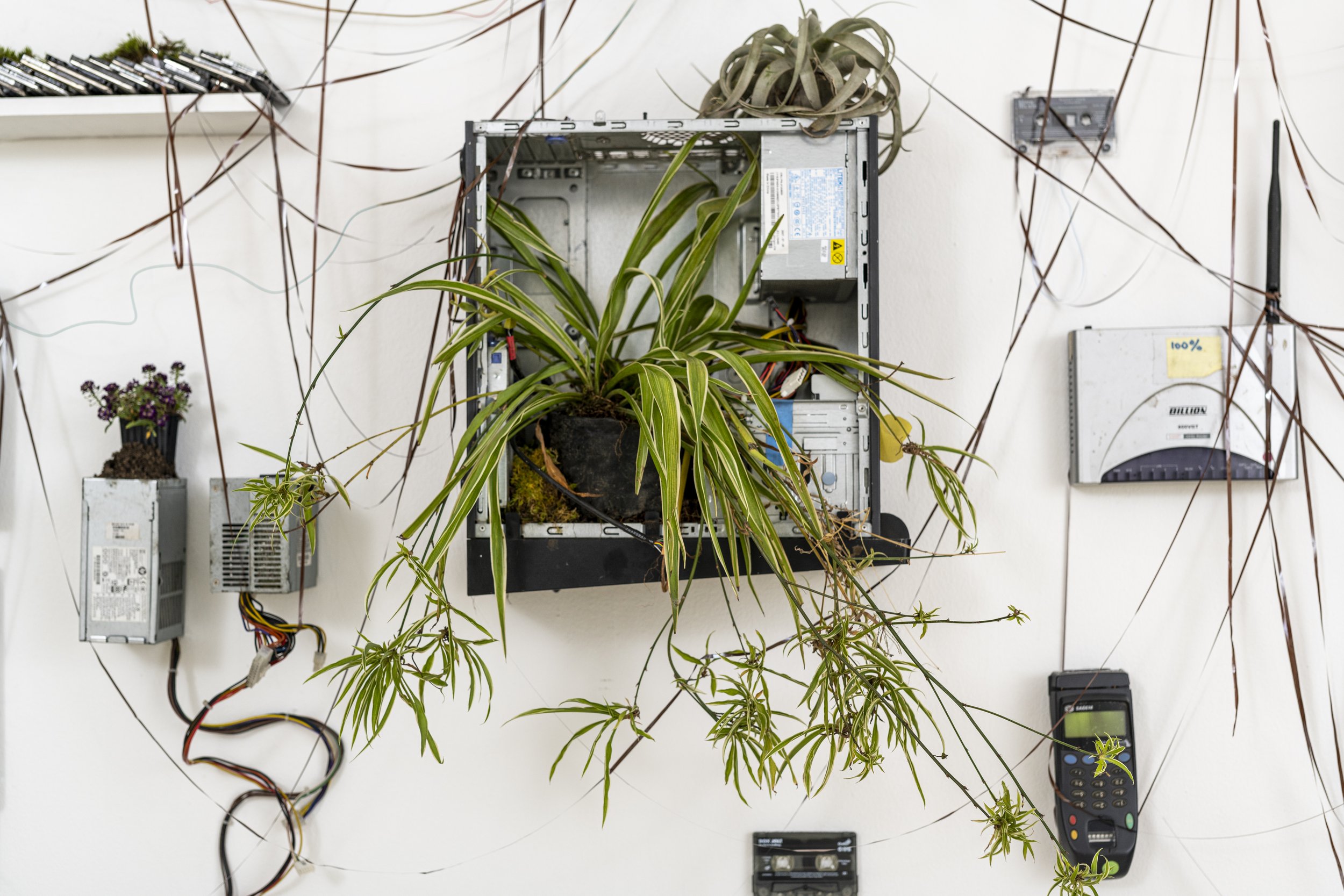
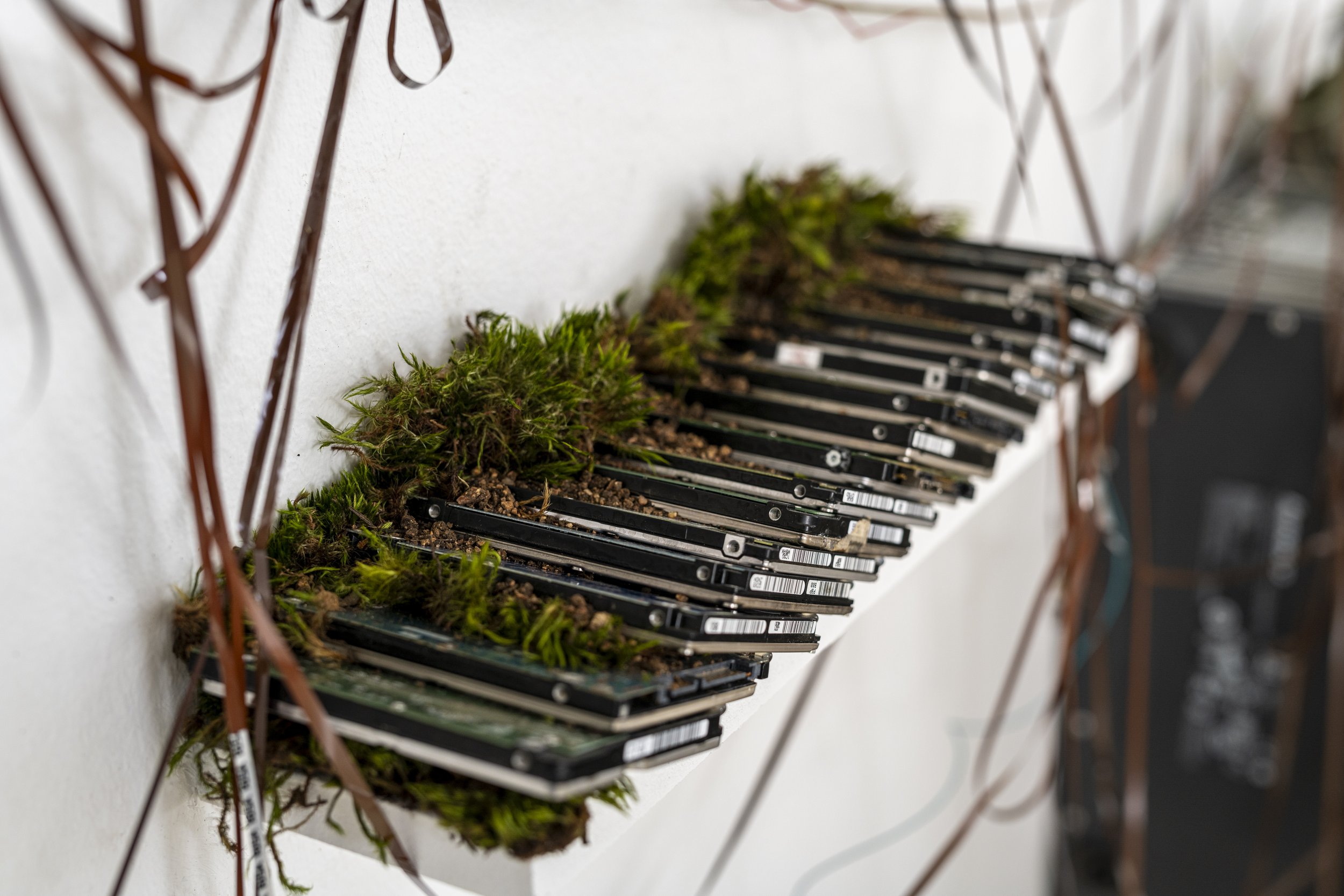
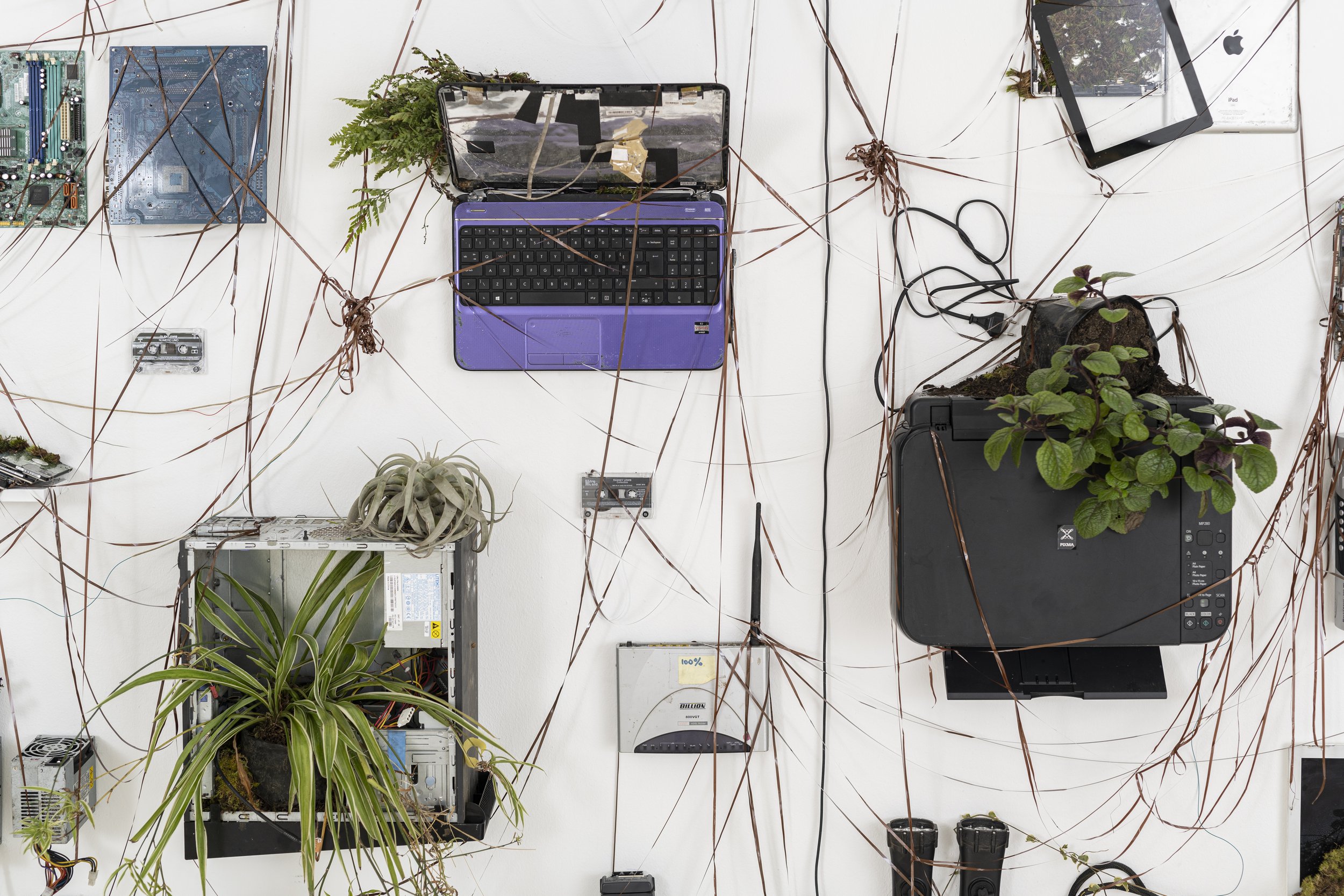
Nathaniel Stern, The Wall After Us, 2020 (re-produced in 2023), Electronic waste and botanical installation; Dimensions variable


